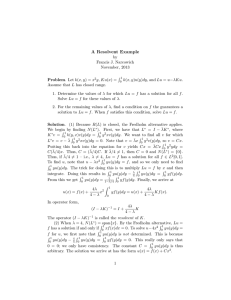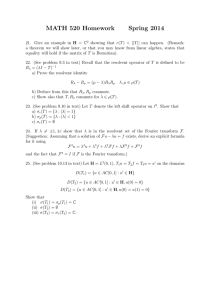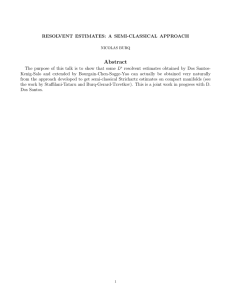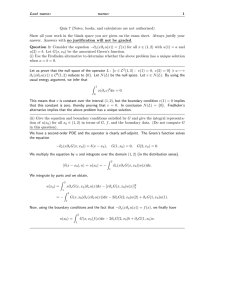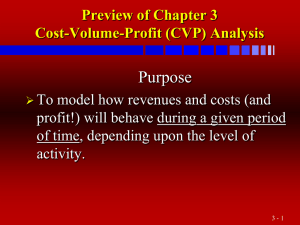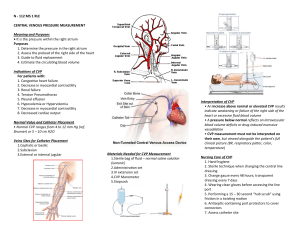A Resolvent Example
advertisement
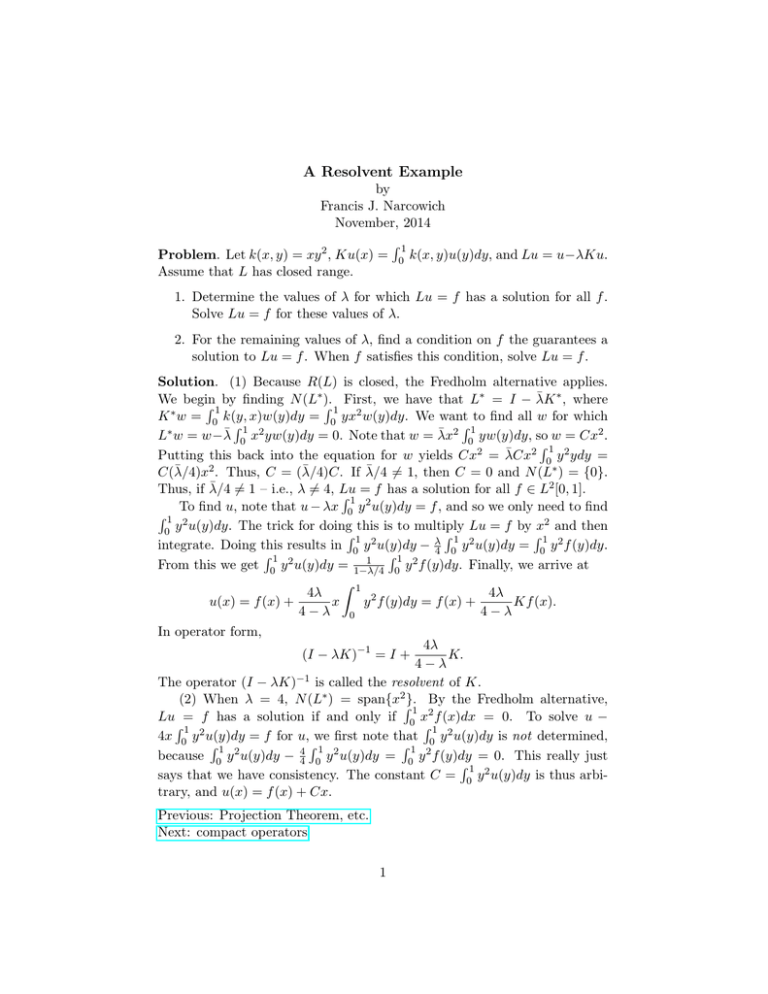
A Resolvent Example
by
Francis J. Narcowich
November, 2014
R1
Problem. Let k(x, y) = xy 2 , Ku(x) = 0 k(x, y)u(y)dy, and Lu = u−λKu.
Assume that L has closed range.
1. Determine the values of λ for which Lu = f has a solution for all f .
Solve Lu = f for these values of λ.
2. For the remaining values of λ, find a condition on f the guarantees a
solution to Lu = f . When f satisfies this condition, solve Lu = f .
Solution. (1) Because R(L) is closed, the Fredholm alternative applies.
∗
We begin
we have that L∗ = I − λ̄K ∗ , where
R 1 by finding N (L ).
R 1 First,
∗
2
K w = 0 k(y, x)w(y)dy = 0 yx w(y)dy. We want to find all w for which
R1
R1
L∗ w = w− λ̄ 0 x2 yw(y)dy = 0. Note that w = λ̄x2 0 yw(y)dy, so w = Cx2 .
R1
Putting this back into the equation for w yields Cx2 = λ̄Cx2 0 y 2 ydy =
C(λ̄/4)x2 . Thus, C = (λ̄/4)C. If λ̄/4 6= 1, then C = 0 and N (L∗ ) = {0}.
2
Thus, if λ̄/4 6= 1 – i.e., λ 6= 4, Lu
R 1 =2 f has a solution for all f ∈ L [0, 1].
To find u, note that u − λx 0 y u(y)dy = f , and so we only need to find
R1 2
this is to multiply Lu = f by x2 and then
0 y u(y)dy. The trick for doing
R1
R1
R1 2
integrate. Doing this results in 0 y u(y)dy − λ4 0 y 2 u(y)dy = 0 y 2 f (y)dy.
R1
R1 2
1
From this we get 0 y 2 u(y)dy = 1−λ/4
0 y f (y)dy. Finally, we arrive at
Z 1
4λ
4λ
y 2 f (y)dy = f (x) +
u(x) = f (x) +
x
Kf (x).
4−λ 0
4−λ
In operator form,
4λ
K.
4−λ
The operator (I − λK)−1 is called the resolvent of K.
(2) When λ = 4, N (L∗ ) = span{x2R}. By the Fredholm alternative,
1
Lu = f has a solution if and only if 0 x2 f (x)dx = 0. To solve u −
R1
R1 2
4x 0 y u(y)dy = f for u, we first note that 0 y 2 u(y)dy is not determined,
R1
R1
R1
because 0 y 2 u(y)dy − 44 0 y 2 u(y)dy = 0 y 2 f (y)dy = 0. This really just
R1
says that we have consistency. The constant C = 0 y 2 u(y)dy is thus arbitrary, and u(x) = f (x) + Cx.
(I − λK)−1 = I +
Previous: Projection Theorem, etc.
Next: compact operators
1
